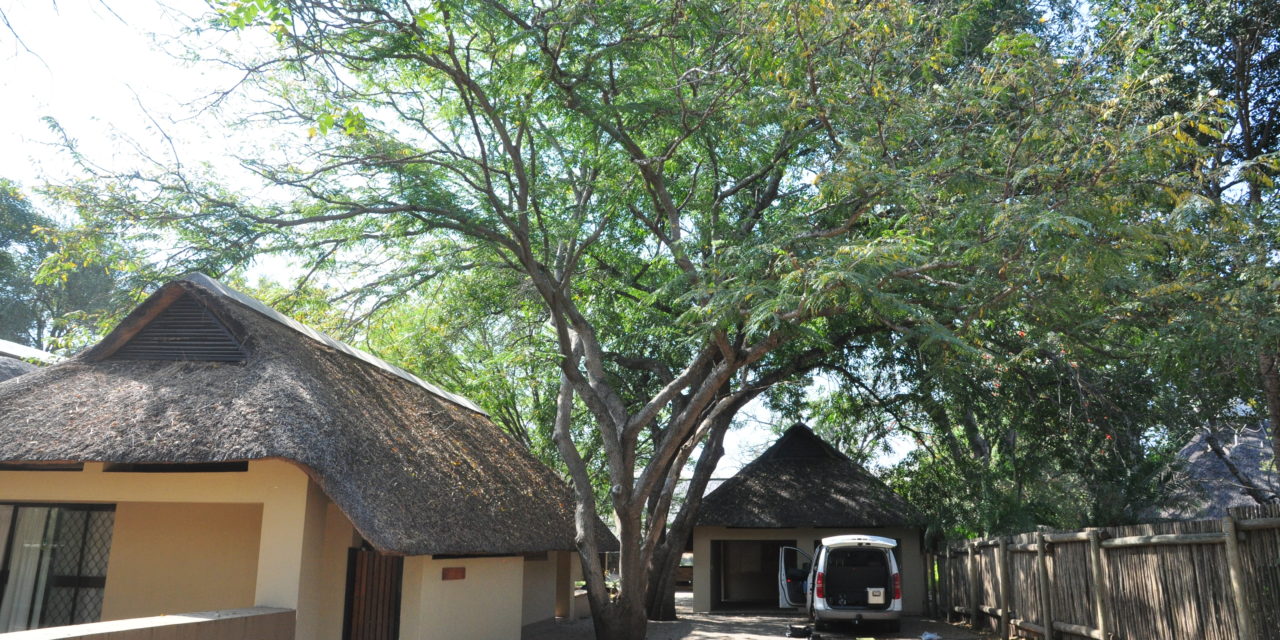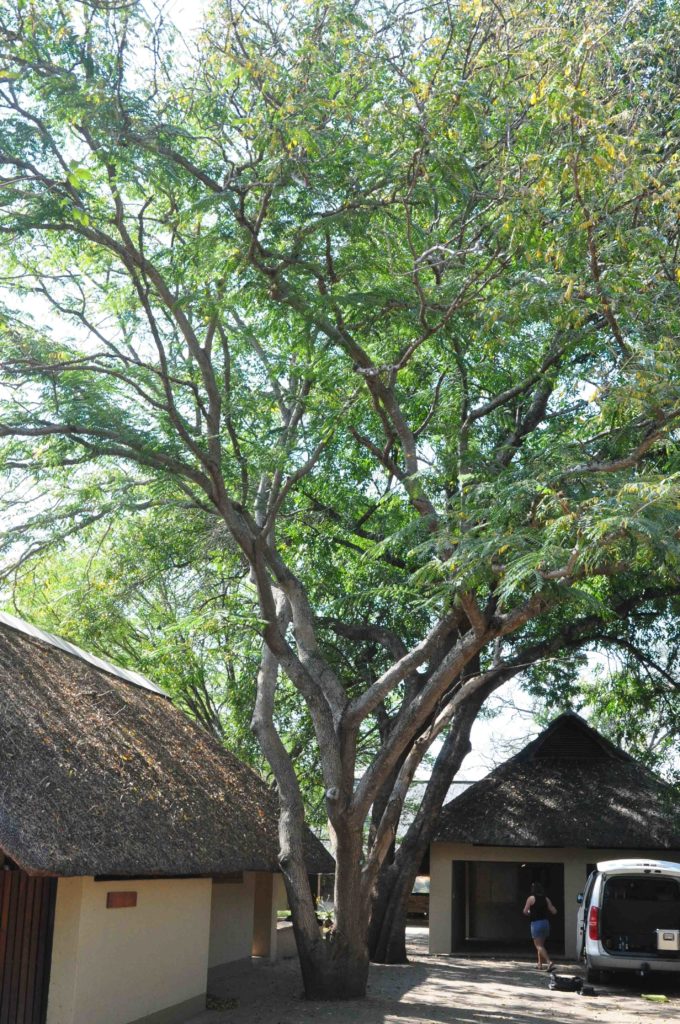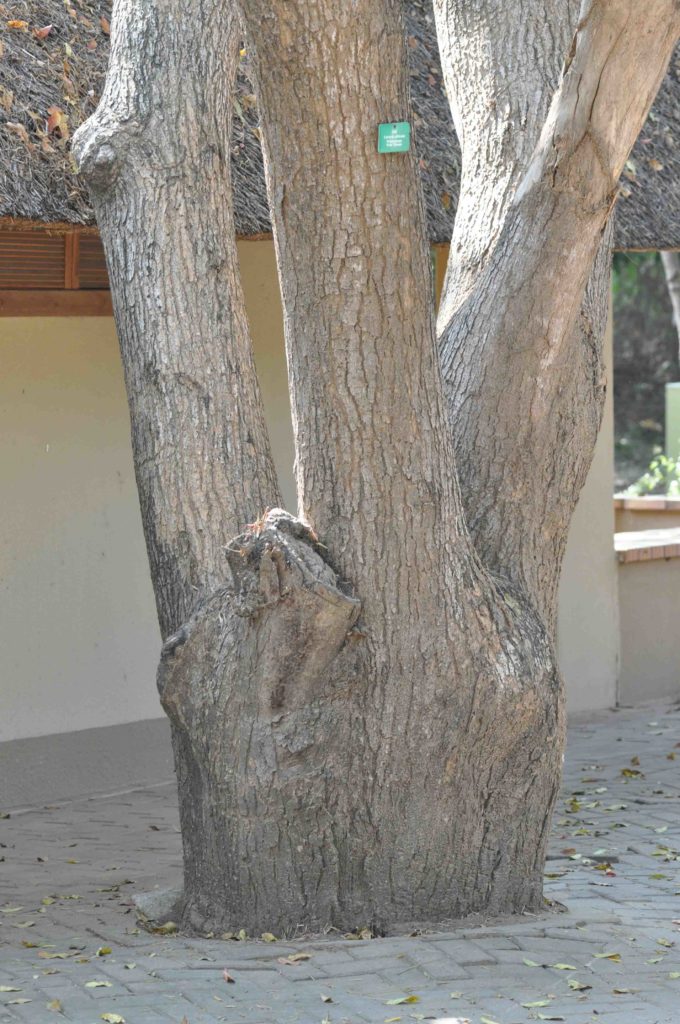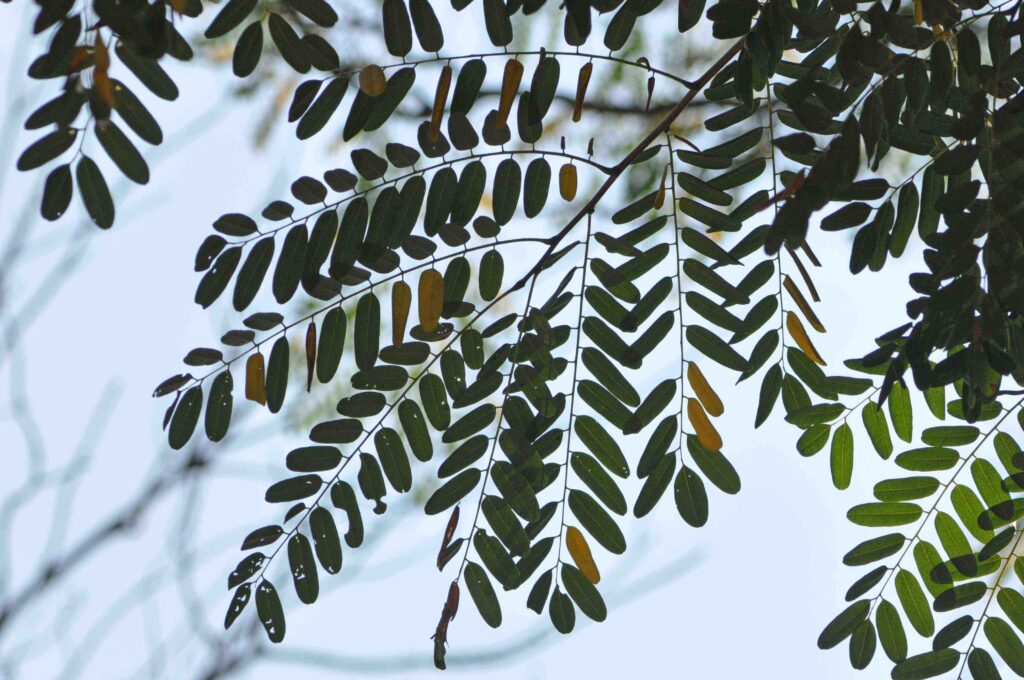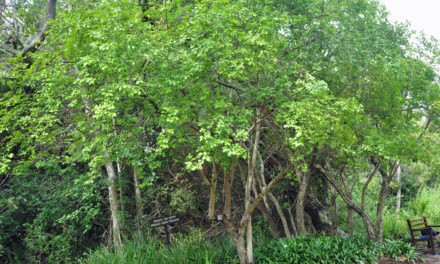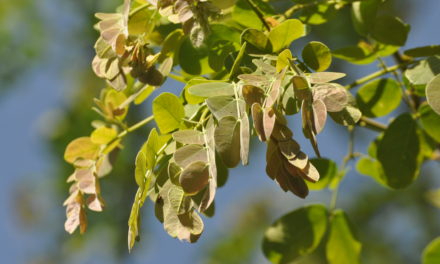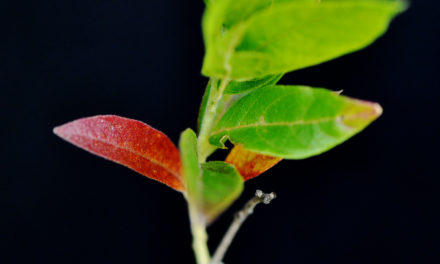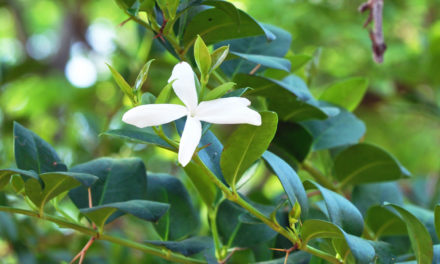General Info
This unarmed deciduous Tree with its high branches has a flattish crown and is up to 25m high. The trunk is up to 1,2m wide. Alternate imparipinnate Leaves have widely spaced leaflets with rolled under margins. Bisexual, zygomorphic Flowers develop below the leaves and are in racemes – without petals Hemispherical mass of golden stamens is distinctive. Fruit is drupe-like pod, and seeds develop in pulp.
Description
Cordyla africana
SA Tree No. 216.
Common names: (Afr) Suikerbekkieboom, Wilde-mango. (Eng) Sunbird Tree (attracts sunbirds to the flowers), Wild Mango. (isiZulu) Igowane-elikhulu, Igowane-lehlati, Umbohone. (siSwati) Umbubuli, Thunzikulu, Vovovo. (Xitsonga) Xivuvule.
Family: Fabaceae or Leguminosae. (Pea, bean or legume family). After the Orchidaceae and the Asteraceae, the Fabaceae is the third largest Angiosperm (flowering plants) family with 700+ genera and close to 20 000 species. Local Tree genera on this website include Acacia (Vauchellia, Senegalia), Albizia, Bauhinia, Bolusanthus, Burkea, Calpurnia, Colophospermum, Cordyla, Cyclopia, Dichrostachys, Erythrina, Erythrophleum, Faidherbia, Indigofera, Mundulea, Peltophorum, Philenoptera, Piliostigma, Schotia and Xanthocercis. The Fabaceae are recognisable by their fruit and by their pinnately compound Leaves. Leaves may also be simple – even bilobed and usually have stipules – some of which may be spinescent. Leaflets are usually entire. Flowers are bisexual and bracteate. Regular flowers usually have 4-5 sepals and the same number of petals. Irregular flowers have 4-5 sepals and 5 or less petals. Stamens have anthers that have 2 pollen sacs and there are usually at least twice the number of stamens as petals – often 10. The superior Ovary has one locule that may contain 1 or more ovules. The Stigma and Style are simple. The single carpel develops into the Fruit, which is usually a pod. This pod dehisces on both sides and may break into segments. Seeds vary.
Name derivation: Cordyla Greek: club-shaped or thickened towards the apex, referring to the shape of the fruit. africana – from Africa. This is the only species that is tropical and widespread in southern Africa.
Conservation: National Status: L. C. Least Concern. Assessment 2004 (C.J. Geldenhuys and J.E. Victor).
Tree
This large, unarmed Tree (photo 92) with its spreading, flattish crown may reach 25m high with a wide trunk up to 1,2m. This plant may also be a shrub. The grey-brown Stem (main axis of the plant, the leaf and flower bearing as distinguished from the root-bearing axis) has many high up branches. Young Bark is green and mature bark is not deeply fissured and tends to peel off in thin longitudinal strips. It becomes greyish-brown and rough with age (photo 89). The branches tend to emerge relatively high up the stem.
- 92 2019/08/12 Skukuza. Photo David Becking.
- 89 2019/08/12 Skukuza. Photo David Becking.
Leaves
This deciduous tree usually has alternate Leaves, up to 32cm long, that are imparipinnate (pinnately compound leaf ending in a single leaflet). Leaves occur in an almost horizontal plane (photo 90). The grooved upper surface of the Petiole (leaf stalk) is up to 2,5cm long. The upper surface of the Rachis (main axis bearing leaflets in a compound leaf) is grooved. Stipules (basal appendage of the petiole) are caducous (an organ or part of which is easily detached and shed early). Apart from the single terminal Leaflet, each leaf has 11-28 usually alternate (occasionally nearly opposite) pairs of leaflets that are, roughly oblong to elliptic, and well-spaced apart (photo 90). Each leaflet is up to 4 x 2 cm. Here the Petiolules (stalks of leaflets) are up to 4mm long (photo 90). The Margin is rolled under and entire (with a continuous margin, not in any way indented). Streaks and pellucid (clear, almost transparent in transmitted light) glands are visible when the leaf is viewed against a strong light. The upper leaflet surface is shiny dark green and a lighter green below – where very short hairs may be present. Both the Base and Apex are rounded, and the apex may be slightly notched.
- 90 2019/08/12 Skukuza. Photo David Becking.
Flowers
Each inflorescence has up to 12 upward facing Flowers filled with nectar. The bisexual or male Flowers are usually produced with the new leaves on new shoots and have persistent bracts (much-reduced specialised leaves, particularly the small scale-like leaves in a flower cluster or associated with flowers). Bright orange-yellow flowers occur in short axillary Racemes (a simple elongated inflorescence with stalked flowers that open in succession towards the apex). The 3-lobed Calyx has a campanulate (bell shaped) tube. The Corolla is absent (no petals). A distinctive hemispherical head of numerous (23+) attractive golden yellow stout Stamens arising from the throat of the calyx tube and protruding up to 2,5cm beyond the rest of the flower. The Filaments are connate (united forming a single part) towards the base and the dorsifixed Anthers dehisce through longitudinal slits. The ellipsoid, superior Ovary rests on a long stalk. The simple Style ends with a simple Stigma. (Sep-Nov).
Fruit
The indehiscent Fruit is an ovate (egg-shaped) pod, supported by a stout stalk, slightly depressed on 1 side and up to 8 x 6cm. It is initially pod-like but matures to be unlike most of the Fabaceae pods. The ripe yellow pod has a leathery skin and only resembles a semi-fleshy Drupe (or stone fruit). It is also not a true mango, which is in the family Anacardiaceae and whose fruit is a drupe. After falling to the ground, the fruit ripens to a yellow colour. Up to 8 large Seeds are imbedded in a fleshy glutinous pulp. The thin-walled, pale brown seeds may germinate while still in the fruit. (Nov-Mar).
Distribution & Ecology
The trees grow in hot, dry bushveld at relatively low altitudes – up to 1 000m. Their natural region in southern Africa is from northeastern KwaZulu-Natal, between Eswatini (Swaziland) and the coastline. It is more common in riverine and swamp forest areas. This tree occurs but is rare in Mpumalanga e.g., Kruger National Park and near Komatipoort. The tree also grows in north, central and southern Mozambique, Zimbabwe, Malawi, Kenya, Zambia and Tanzania. From here, it occurs northwards into tropical Africa. The Flowers produce copious nectar that attracts a wide variety of birds – especially sunbirds. Damaged parts yield a white resinous gum/resin. Elephants, monkeys and a number of other animals consume the Fruit.
Ethnobotany
The pulpy loquat-like Fruit has a high concentration of vitamin C. It is not very tasty but edible – raw or cooked and this is unusual for a legume. The Wood is white to off-white and not very durable. It is used for making tool handles and building – including canoes. The wood works well on machine tools. Boards of 2,5cm thick take about 6 weeks to air dry to 12% moisture content and the rate of shrinkage is fairly high. Pre-boring planks will help prevent splitting. This wood is not recommended if the finished item is to be subjected to shock. The wood is used for fuel. The hollowed-out trunk is used for making impressive sonorous drums. The seeds are edible after drying over a fire. Plant the quick growing Seeds soon after harvesting. Traditional medicine makes use of the Bark. This attractive tree is ideal for warm, frost-free areas.
References
Boon, R. 2010. Pooley’s Trees of eastern South Africa. Flora and Fauna Publications Trust, Durban.
Burrows, J.E., Burrows, S.M., Lotter, M.C. & Schmidt, E. 2018. Trees and Shrubs Mozambique. Publishing Print Matters (Pty) Ltd. Noordhoek, Cape Town.
Coates Palgrave, M. 2002. Keith Coates Palgrave Trees of Southern Africa, edn 3. Struik, Cape Town.
Geldenhuys, C.J. & Victor, J.E. 2004. Cordyla africana Lour. National Assessment: Red List of South African Plants version 2020.1. Accessed on 2021/12/29.
Palmer, E. & Pitman, N. 1972. Trees of southern Africa, Balkema, Amsterdam, Cape Town.
Schmidt, S. Lotter, M. & McCleland, W. 2002. Trees and Shrubs of Mpumalanga and the Kruger National Park. Jacana, Johannesburg.
van Wyk, B. & van Wyk, P. 1997 Field guide to Trees of Southern Africa. Struik, Cape Town.
http://pza.sanbi.org/cordyla-africana
https://en.wikipedia.org/wiki/Cordyla_africana
https://uses.plantnet-project.org/en/Cordyla_africana_(PROTA)#Cordyla_richardii

